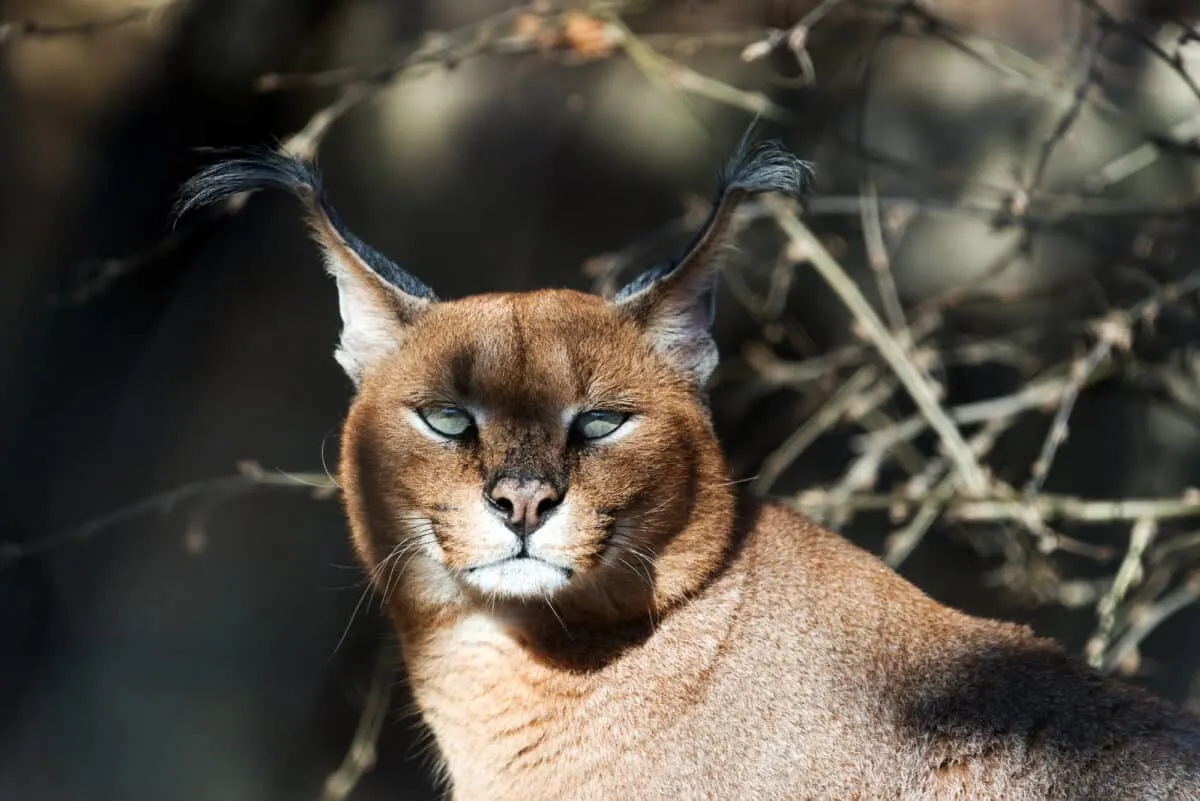If you’re an animal lover, you can’t ignore these bossy miniatures packed with attitude. The Caracal cat is a wild cat that belongs to the cat species and which almost looks like a mini lion.
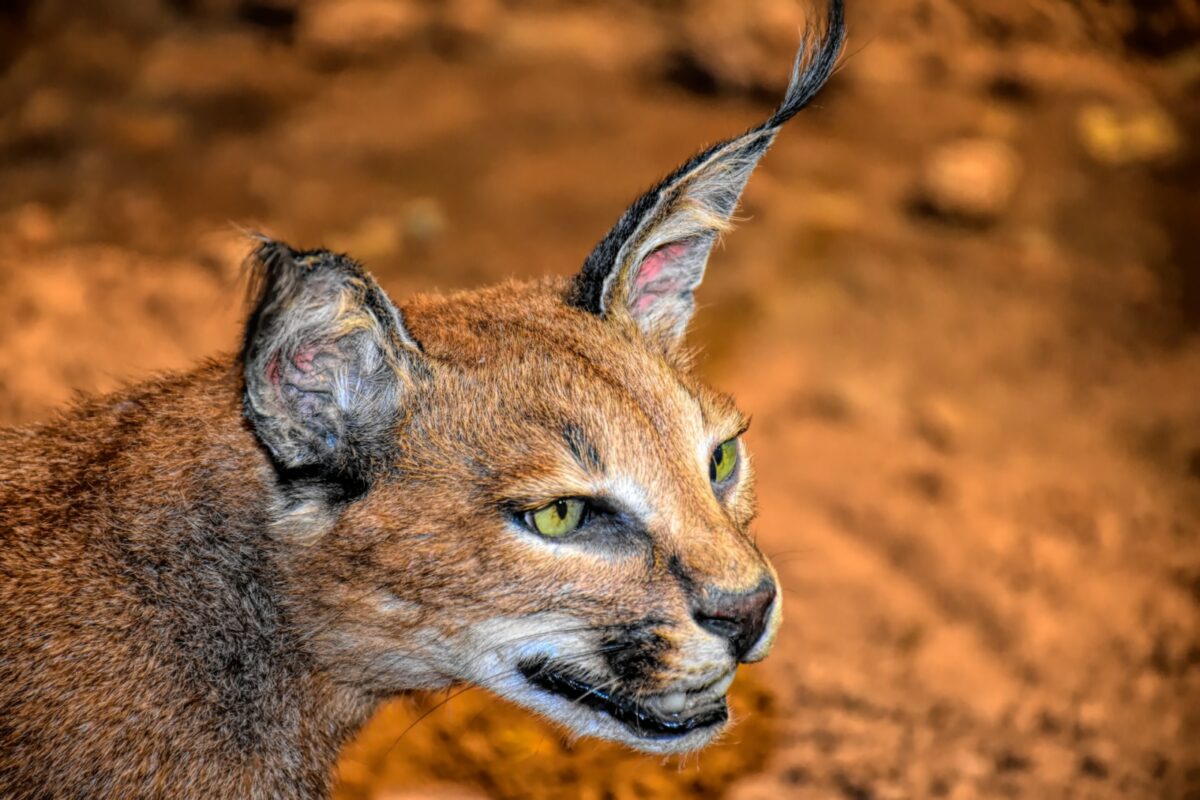
These wildcats are medium in size and live in the Middle East, India, and Africa’s desert regions. These cats are not suitable to keep as pets due to the hunting skills that always keep them super alert.
This tiny creature can surprise anyone to the core if they feel endangered or provoked. We will discuss this and a whole lot more about these wild cats in the article, so without further ado, let’s dive into the details.
All About Caracal Cats
Caracal cats are wild cats that belong to Africa; however, they are also widely distributed in Pakistan, India, and the Middle East.
Appearance
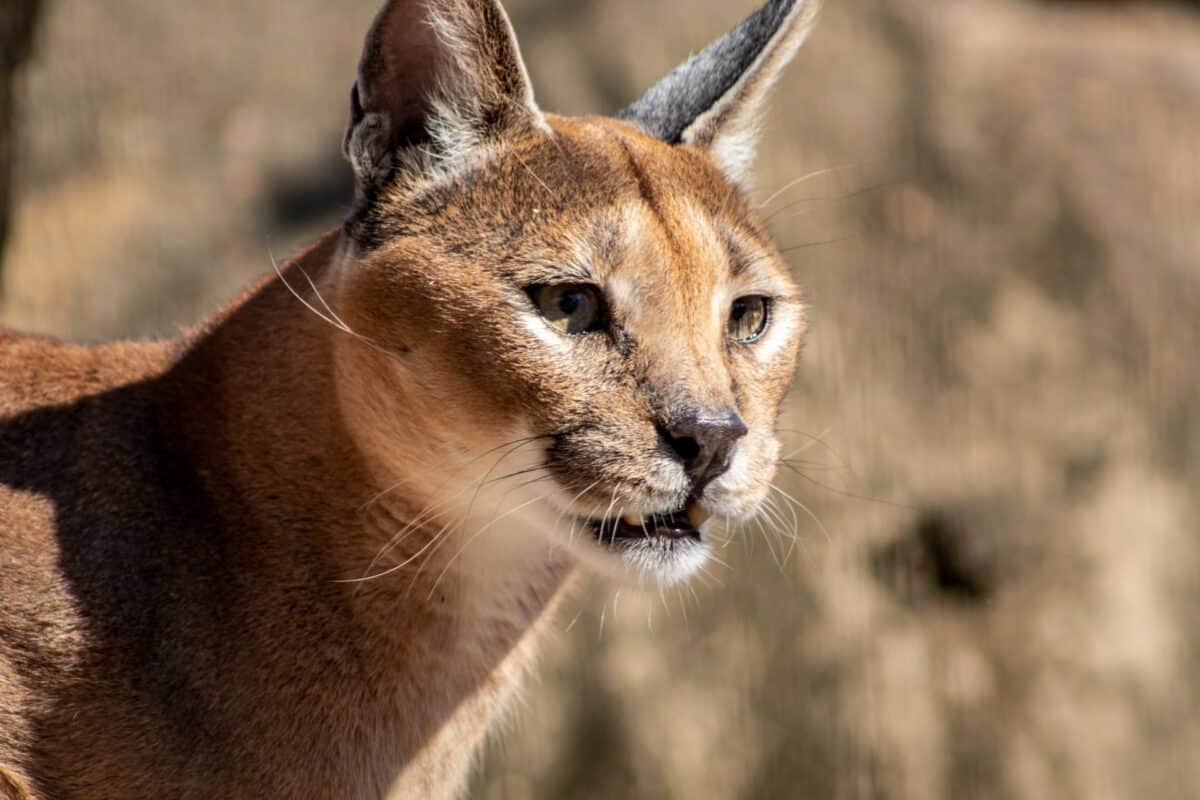
It is the biggest and most dangerous of Africa’s tiny cats. These cats have short, dense hair that is often a consistent shade of tawny brown to brick red and black. They have long, tufted faces, long ears, and long canine teeth.
Black caracals are uncommon; however, they can appear in the same litter as caracals of other colors. They are 35-39 inches long and stand between 16 and 20 inches tall at the shoulders.
The tail is well-muscled and employed as a rudder in the air despite being bobbed at roughly a 3/4 length. The back of the ears is covered in long, black tufts that measure 1.75 inches.
The caracal’s top line slopes slightly from the hips to the shoulders, and the hind legs are longer than the front ones. Males can weigh up to 40 pounds, while females reach 35 pounds.
Habitat
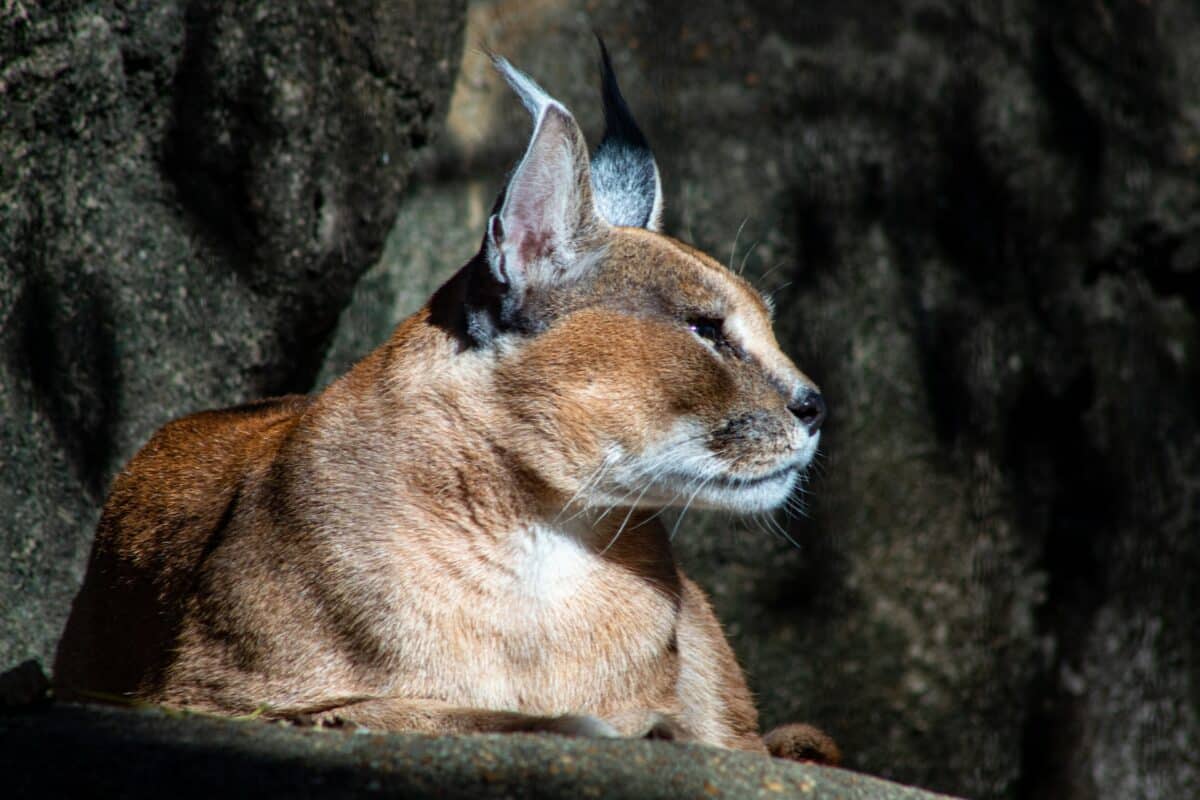
Numerous habitats are suitable for caracals. They stay away from sandy deserts and live in scrubby woods, savannahs, and woodlands. They are prevalent throughout most of Africa, the Arabian Peninsula and northwest India.
Usually seen with their young in dense undergrowth, caracals make their maternal nests in abandoned porcupine tunnels and rock crevices. They live in evergreen and montane forests.
Diet
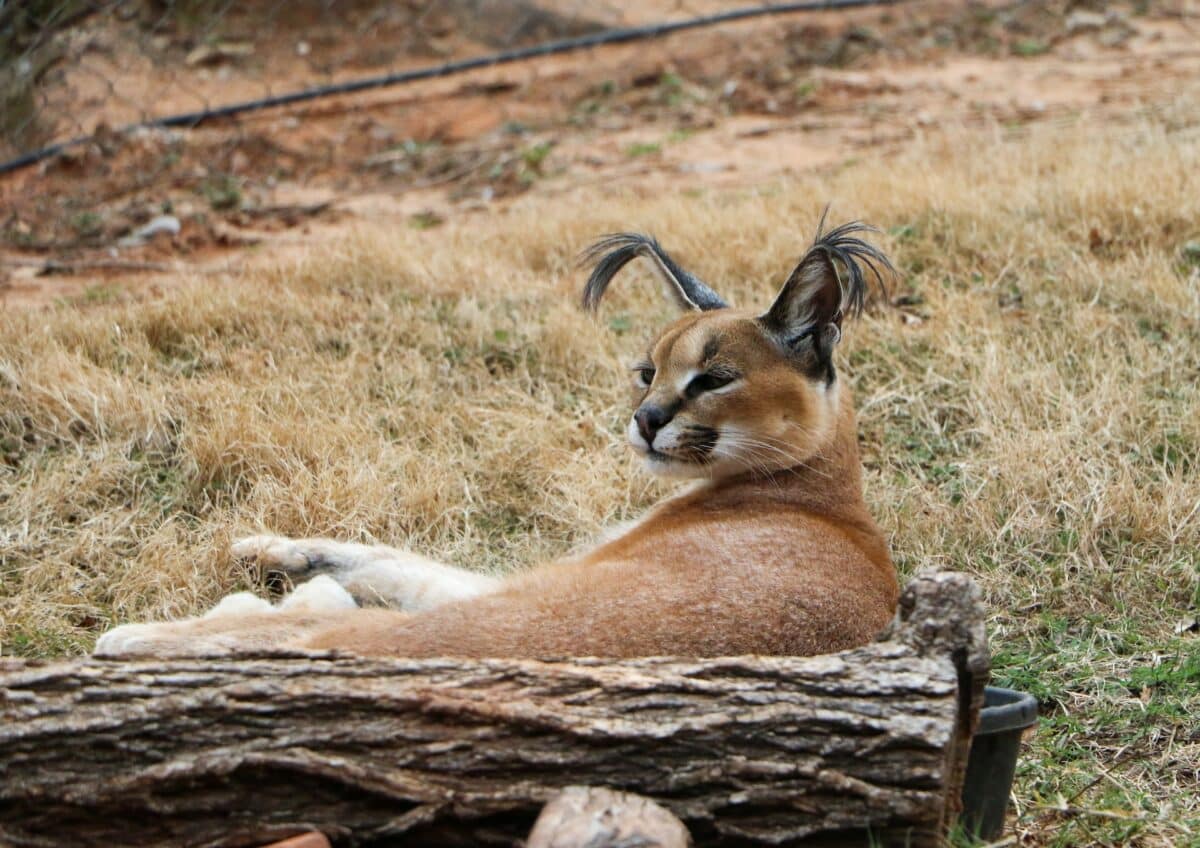
Caracals are fierce carnivores who prefer to hunt on hyraxes, hares, antelopes, rodents, tiny monkeys, and birds, occasionally taking on larger prey without hesitation. It consumes many foods but tends to concentrate on the most plentiful in its particular area.
They are incredibly athletic and can leap swiftly to pounce on prey, like a flying guinea fowl. It has been observed that caracals prey on small animals in sheep and goat farming areas in South Africa.
It occasionally eats grasses and grapes, which aid in getting rid of parasites in its stomach.
Hunting
The caracal is an effective hunter that can take down a victim two to three times its size, thanks to its speed and agility. A caracal stalks its prey from a close distance before pouncing on it directly or taking it down with a sideswipe of the forepaw.
Once it attacks the target, the caracal smothers its prey by biting the underside of the throat or the nape of the neck to kill it. On antelope kills, it has been seen to start eating at the tail.
It could be challenging to tell the difference between a caracal and a black-backed jackal’s bite on a dead sheep, goat, or antelope.
Reproduction
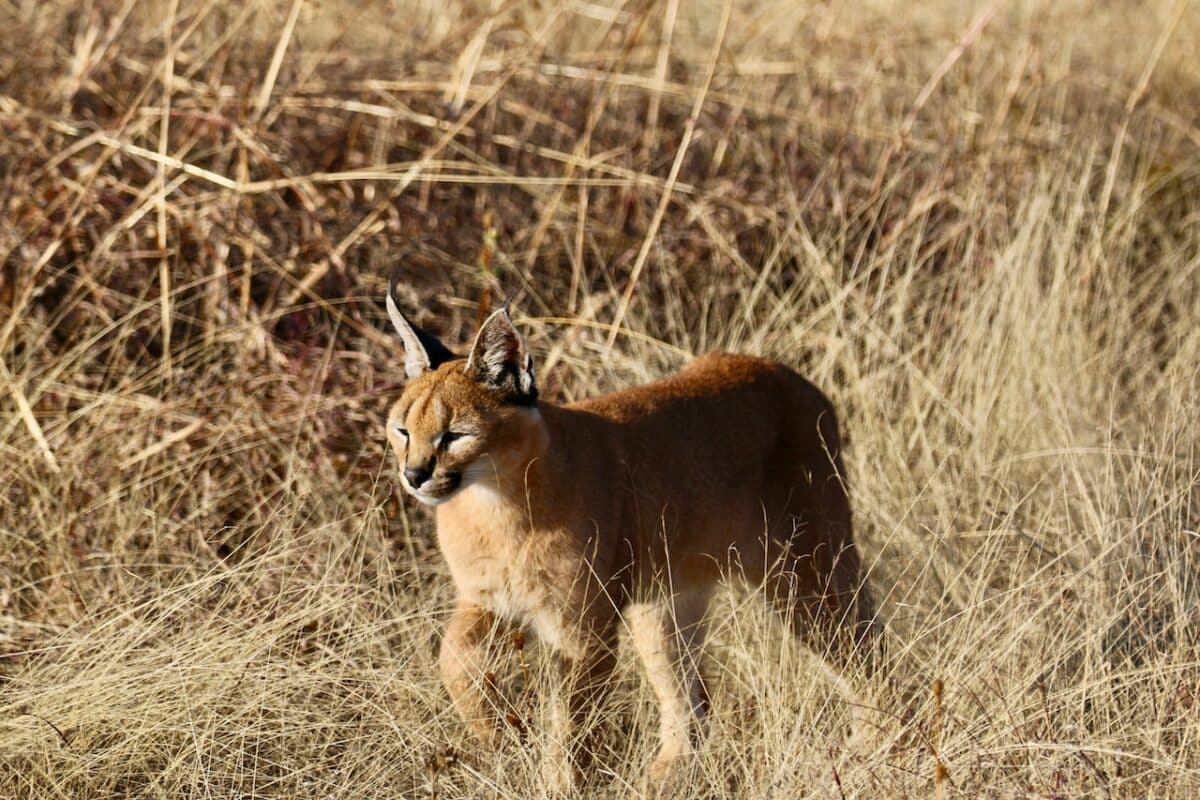
Once they turn one year old, both males and females reach sexual maturity. Due to their preference for solitude, caracals only engage with other individuals during the mating season.
They will pair off for a few days to mate during the mating season, but after the female becomes pregnant, the male is driven away. Breeding occurs throughout the year.
One to six kittens are born, with three being the typical litter size, after a female has been pregnant for 69 to 78 days. By the time they are ten weeks old, the young caracal kittens are ready to stop drinking their mother’s milk.
The kittens live with their mother and continue to be protected by their mother for almost a year when they reach maturity.
Lifespan
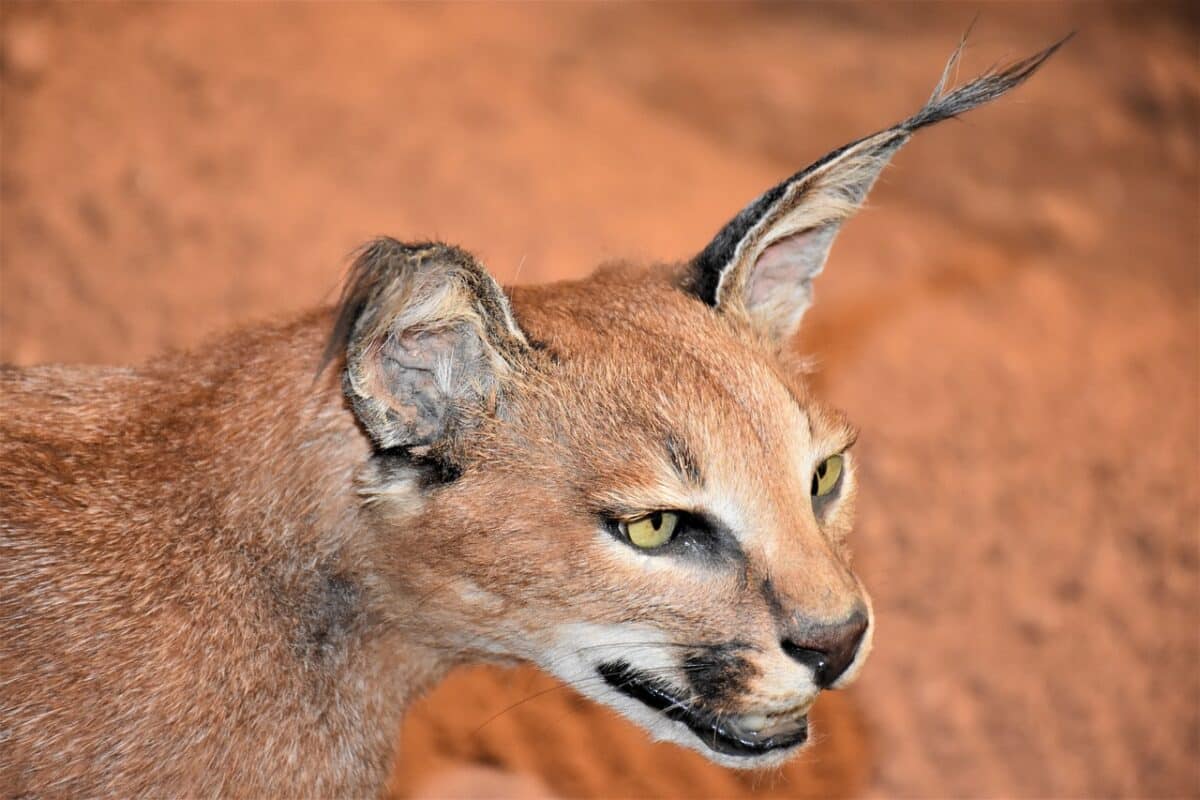
Due to the lack of predator threats, consistent food supplies, and access to medical care when necessary, caracals survive longer in captivity. In the wild, caracals can develop illnesses as they age from untreated skin problems and infections brought on by wounds.
Caracals can also contract rabies from other animals, much like domestic cats do. Twelve years is considered the normal lifespan of caracals in the wild, while they have been known to live up to nineteen years in captivity.
Threats and Predators
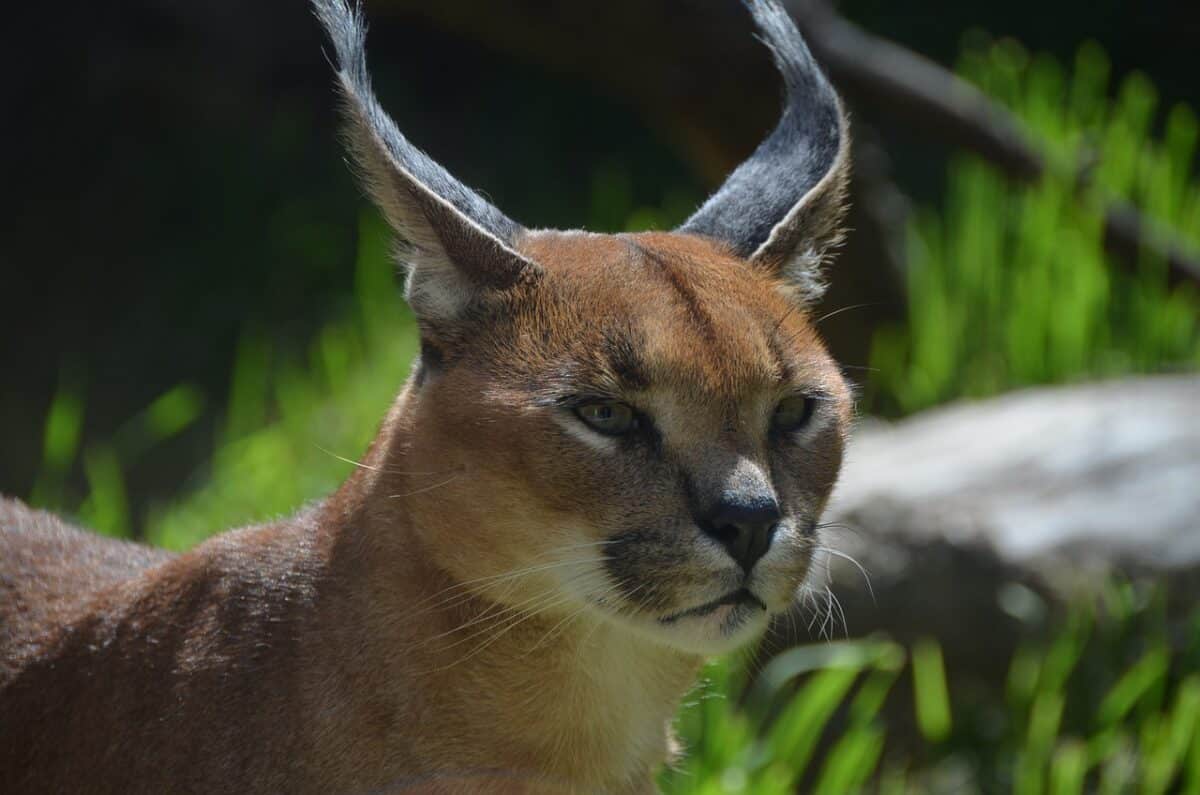
Caracals are mostly preyed upon by lions and hyenas. These three animals may come into contact as they all hunt in the savanna. Caracals are also at risk from humans.
When these cats attempt to hunt cattle, farmers often kill caracals. Many people also settle in the caracal’s territory and clear land, driving the caracal’s prey away.
However, this only happens in a handful of their ranges, but still results in many deaths. In other parts of its habitat, it is hunted for its skin and meat, which some jungle inhabitants view as a luxury.
Conservation
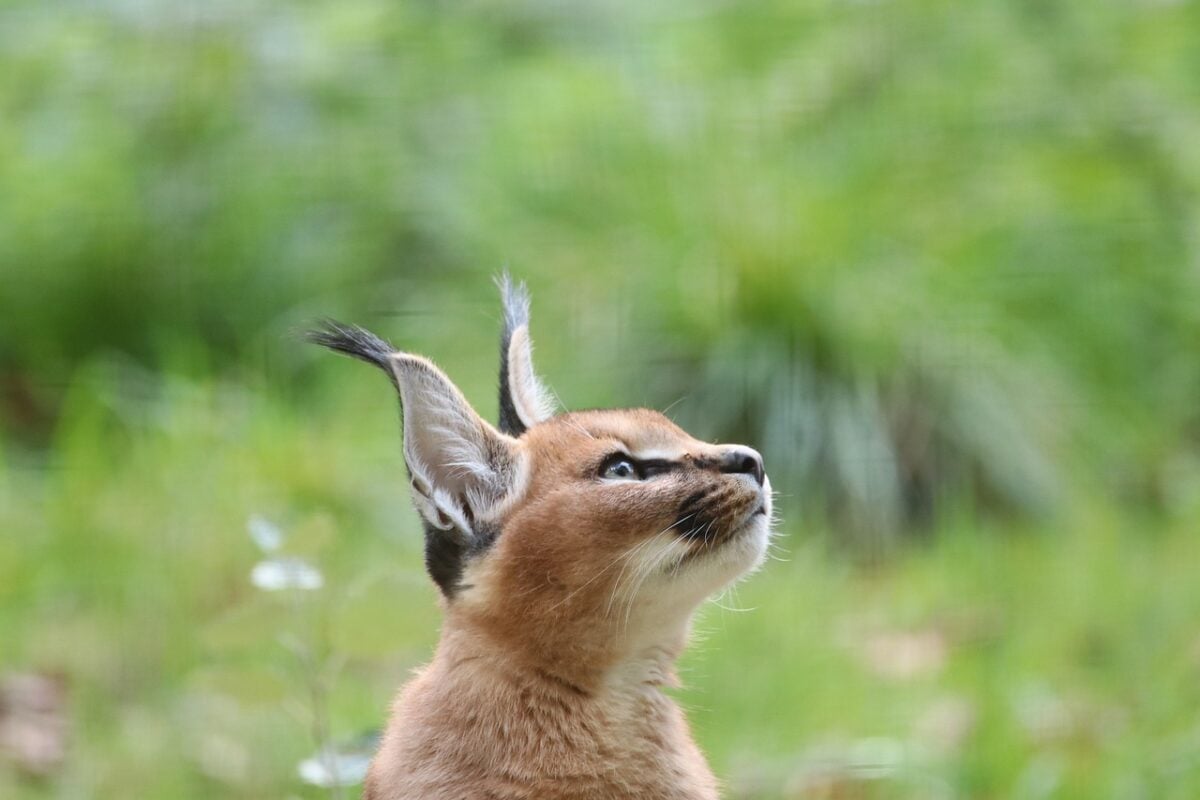
Hunting and habitat destruction are the biggest risks to caracal populations. Caracal numbers are not in decline in most of their range, but they are still at risk. The cat is classified as threatened in North Africa, Critically Endangered in Morocco, and of least Concern elsewhere.
Most of the species’ range is covered by legislative protection. In Namibia and South Africa, landowners can only shoot a caracal if they believe it threatens their property. Caracal killing is prohibited in many nations.
However, Namibia and South Africa permit hunting, as the caracal is considered a cattle issue.
Interesting Facts About Caracal Cats
Wild caracal cats possess some interesting and astonishing traits. Let’s uncover those to learn more about them.
#1 Opportunistic Feeders
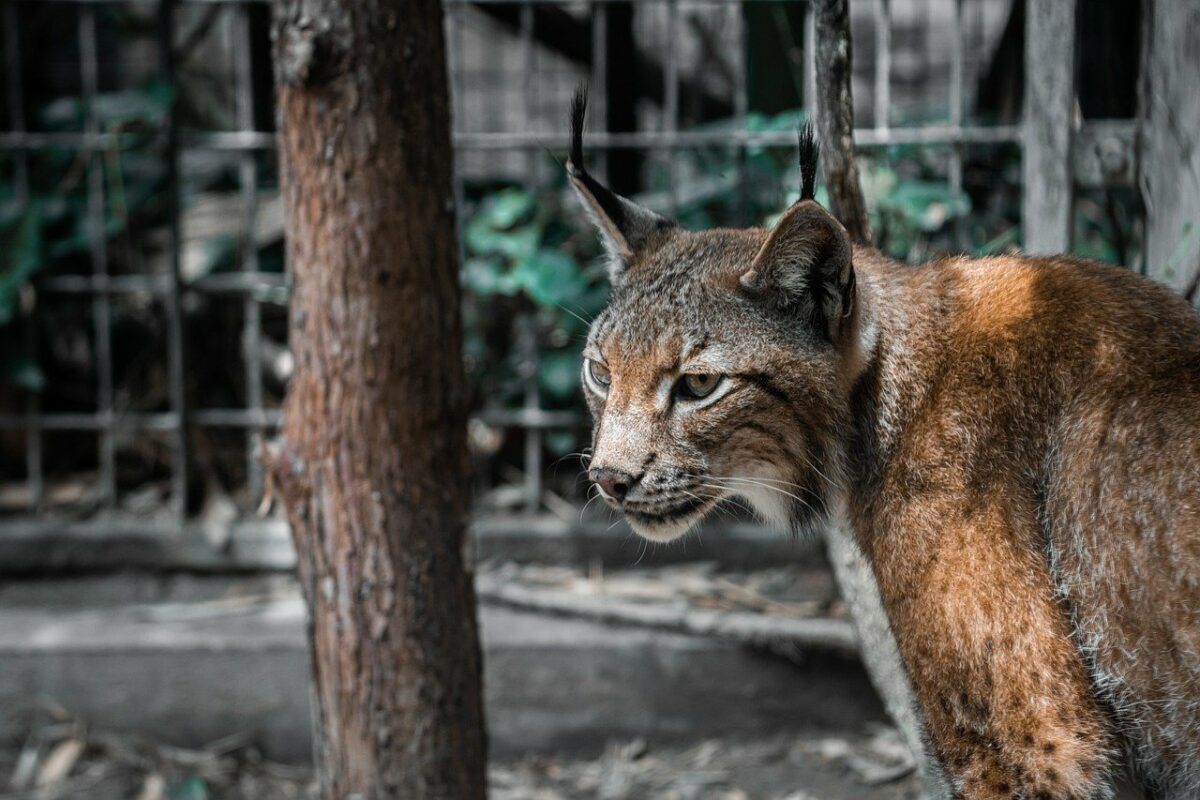
Caracal cats are true examples of opportunistic feeders. In some areas, caracals are one of the few species that can kill specific prey.
They consume what is most readily available and take the least energy to pursue and kill; this opportunistic feeding style contributes to the regulation of prey species that are either under or over-populated.
#2 Hissing
Caracal has a hissing habit – a method of cat communication. Yet, some people may misinterpret it to signify aggression. Moreover, like contented cats purring, they indicate their mood by making sounds like hisses and growls.
#3 Killer Bite Force
Caracals are small, swift cats that live in the wild and frequently flee from threats they encounter. However, if you’re wondering whether caracals can kill humans, they wouldn’t. These ferocious hunters would rather search for prey than hurt a person.
They typically bite their prey on the neck or the underside of the throat. Although the fearsome jaguar tops the list of big cats with the strongest bite, the caracal also possesses powerful jaw muscles in relation to its size.
#4 Nocturnal
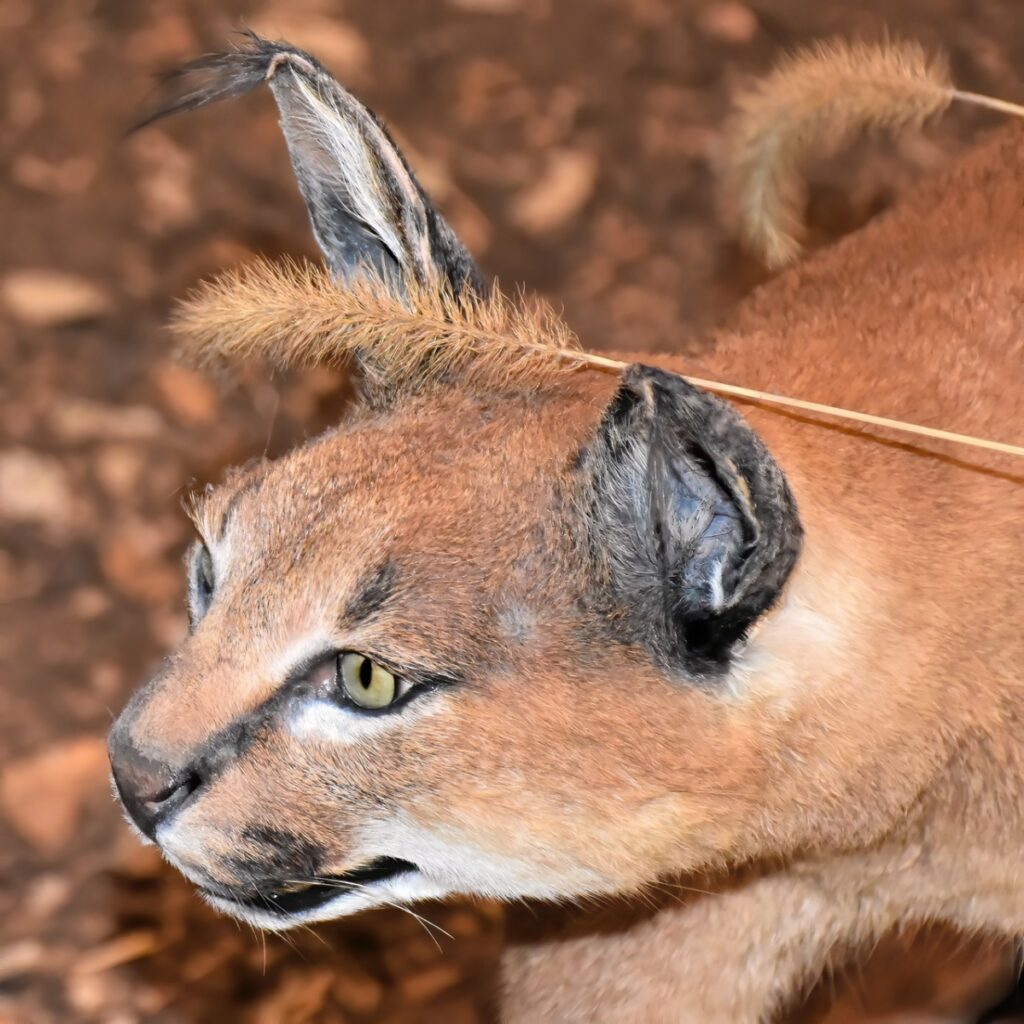
Caracals are nocturnal; however, they can appear during the day despite being primarily nocturnal. Despite being a particularly skilled climber, it often hunts on the ground. They can leap an astonishing 10 feet in the air to catch birds.
#5 Caracals Love Pleasant Scents
Scientists revealed unexpected findings from a study conducted in the Southern Cape regarding how caracals responded to rocks sprinkled with synthetic perfume. Scientists used scents including I Love Vanilla, Dolce & Gabbana, Lentheric, and The One to spray rocks.
Caracals showed a surprising response when they came across the perfumed rocks. The cats brushed their cheeks on the rocks to show that they were attracted to the fragrances.
#6 They Are Not Suitable As Pets
Like a house cat, a caracal may be a playful little kitty cat who loves to roll around and cuddle with its human owners. But, we must not lose sight of these animals as wild creatures at heart, and as such, the confines of a house will cause them immense stress and misery.
Caracal cats shouldn’t be kept as pets. Experts are undeterred in their judgment of anyone who believes that this wild African cat may live in domestication, even though it is not as fierce as a lion.
#7 Extraordinary Sense of Hearing
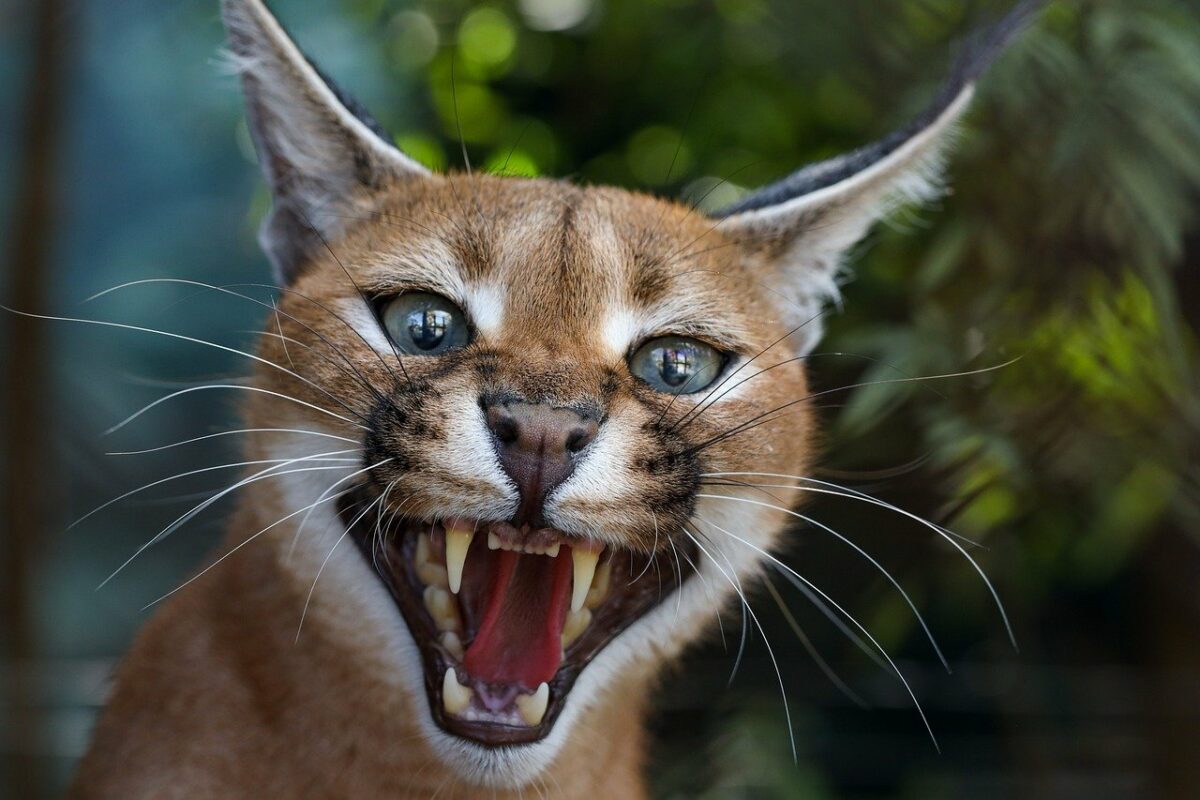
Caracal cats have 20 muscles that make up the distinctive ears of caracals, which allow for better control. These cats can rotate their ears in different directions to discern distances and sounds.
The species are outstanding hunters because of this superpower, which allows them to use their hearing to find prey more quickly. However, it has been noted that these tufts behave very much like whiskers.
These cats use their whiskers to detect obstructions and gauge distances, supporting their ability to hunt stealthily.
#8 They Can Survive Many Days Without Water
A caracal may go very long without drinking without risking its life. These cats can live in these areas because they have modified their capacity to absorb enough fluid from their prey. This unique ability enables it to support itself on lengthy travels across dry, arid lands in quest of food.
#9 Carnivore
Caracals are carnivores who feed on nothing other than meat. The caracal feeds on a variety of smaller prey, including rodents, birds, and rabbits.
Moreover, a caracal cat does not avoid the occasional larger-bodied prize like gazelle or some of Africa’s tiniest antelope species.
#10 Speed Fighters
These tiny wildcats disproved the idea that bigger cats have the upper hand when it comes to sprinting speed. The caracals can run and jump great distances because of their strong hind legs and agility.
In full flight, a caracal can travel up to 50 mph. Additionally, caracals can leap up to ten feet high and have evolved to grab birds in flight.
#11 Silent Hunters
They do not stalk their prey as other predators do. Instead, they silently approach their victim and then leap upon it.
Caracals may pursue enormous prey that would require several meals to consume. Moreover, to preserve their meal later, they bury it in the dirt – nature’s pantry.
#12 Cat Among The Pigeons
“Put the cat among the pigeons” is a phrase that comes from the caracal. Trained caracals were unleashed into arenas with a flock of pigeons during the ancient times of Iran and India. The number of birds the cat would jump and kill next became the subject of wagers.
#13 Kittens Are Born With Hunting Traits
The caracal kittens have closed eyes at birth, typically taking 6 to 10 days to open fully. When the kits are ten weeks old, they stop nursing and begin eating meat. They start hunting insects and lizards soon as they stop feeding their mother’s milk.
#14 Communicating
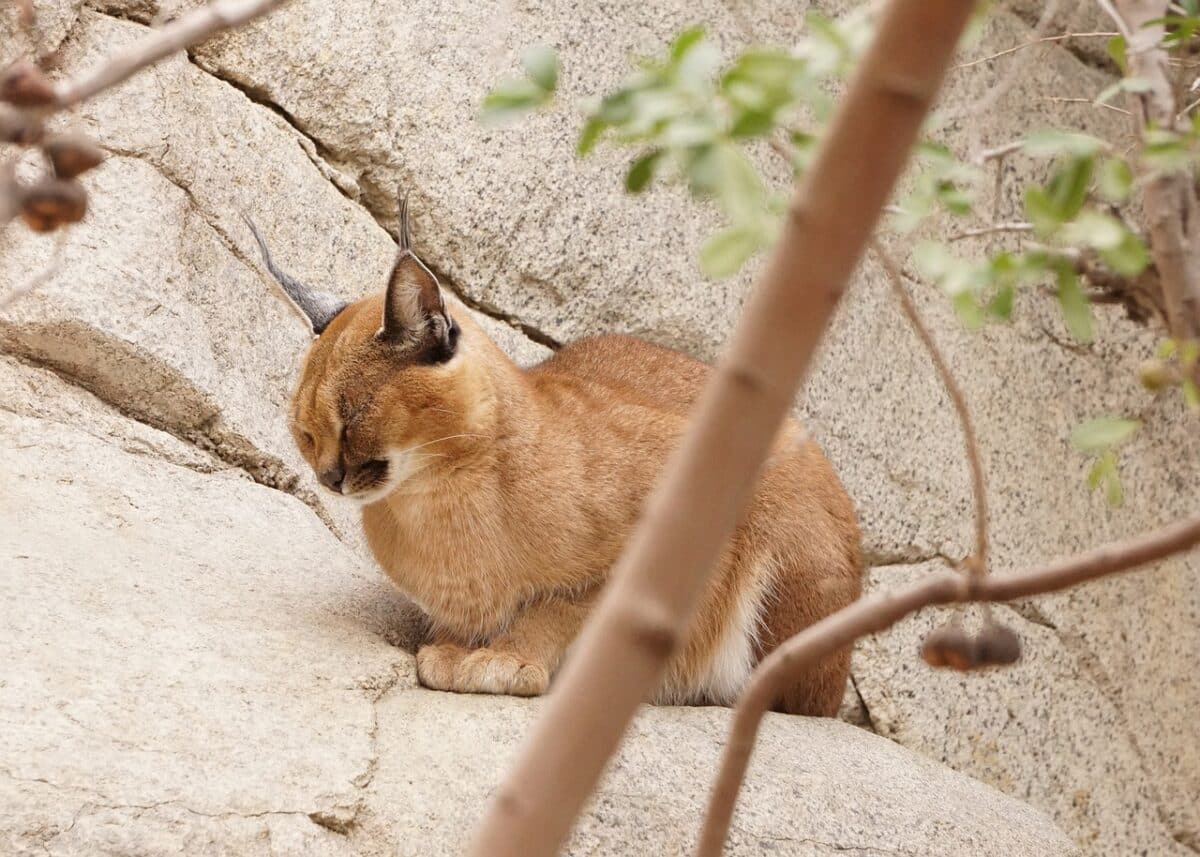
Normally silent, caracals can howl like a leopard when necessary. They may hiss or growl in times of rage, but they also do so in times of contentment or attempting to communicate.
A caracal hisses most frequently when it perceives a threat or agitation. Moreover, a caracal also meows, growls, spits, hisses, and purrs like other cats.
#15 Desert Lynx
The caracal is also famous as the “desert lynx.” However, they are not particularly lynx-like in appearance. They have long legs, slim bodies, and longer tails than true lynxes.
Their large, powerful, and muscled rear legs are the only part of their body that resembles a lynx.
#16 Sharp Claws
Caracals can hang off trees and reach branches using their razor-sharp claws. They mark their territory by clawing on trees, and scent is released between their toes.
They have retractable claws, just like all cats other than cheetahs. In addition, they catch and hunt their prey with the aid of their claws.
#17 The Name “Caracal” Comes From the Turkish Dictionary
The Central Asian Turks called the caracal cat, which was found to be strongly linked to the Serval and African gold cat, “karakulak,” because of the black hair around its ears. “Kara” means “black,” and “kulak” means “ear” in Turkish.
We can interpret it as “the black-eared;” in this instance, it refers to the “black-eared cat” or “cat that has black ears.”
The Bottom Line
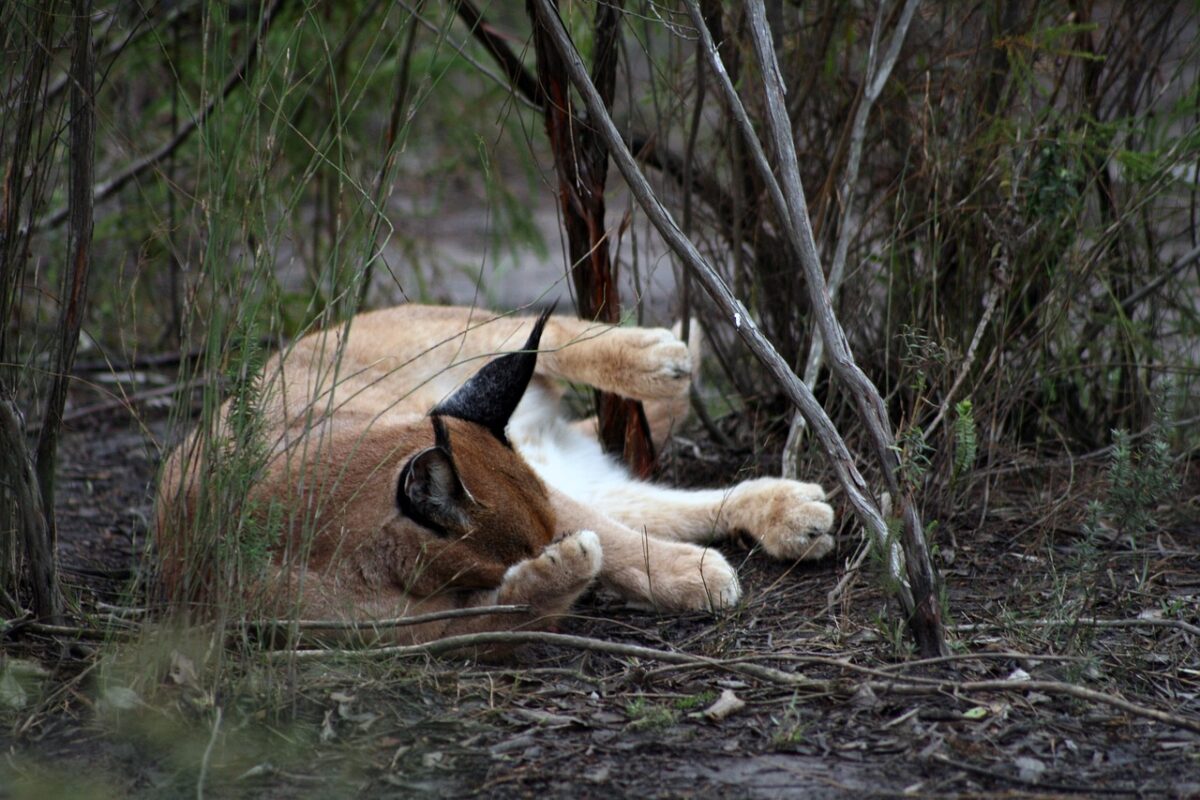
| Key Points |
| It is a medium-sized wild cat that lives in the Middle East, India, and Africa’s desert regions. |
| Caracals make their maternal nests in abandoned porcupine tunnels and rock crevices. |
| The caracal is an effective hunter that can take down the victim two to three times its size thanks to its speed and agility. |
| Caracal cats have 20 muscles that make up the distinctive ears of caracals, which allow for better control. These cats can rotate their ears in different directions to discern distances and sounds. |
| Caracals can hang off trees and reach branches using their razor-sharp claws. By scratching their claws on trees scent is released between their toes, they use this to identify their territory. The phrase “Caracal,” which means “black ear” in Turkish, is the source of the name. These cats stand out from most wild cats by means of their tufted ears. Caracals are great hunters due to their speed and capacity for leaping into the air. These cats are not suitable to keep as a pet as their hunting traits are never at rest, and keeping them around children or other pets is dangerous. Even though these cats attack small animals, they can attack humans if they feel threatened. |
Thank you for reading this article! If you want to learn more about the cats of the world, head over to read about the Lynx vs. Bobcat.
- Chicago Cat Jumps From 5th Floor of Burning Building and Survives - April 22, 2024
- The Cruelest Contest in the World: Rattlesnake Round-Ups - April 21, 2024
- Rare Footage: Wild Fox and Pet Cat Play-Date - April 21, 2024

